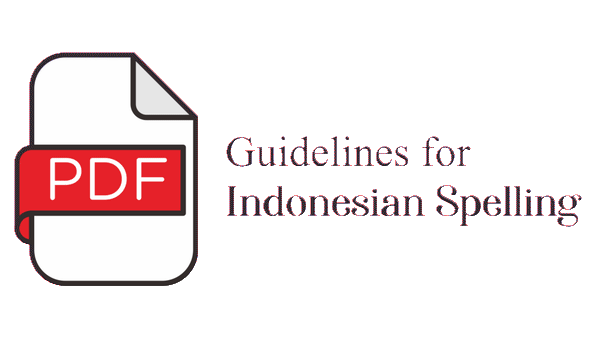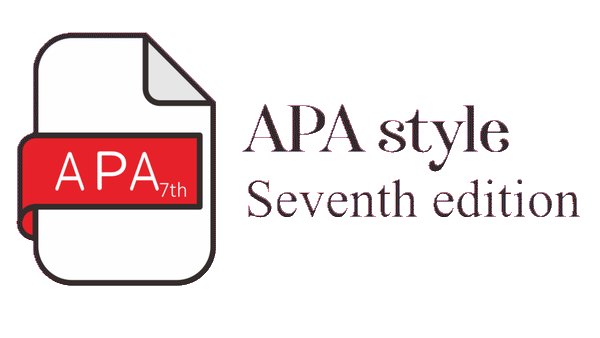INDEKS KERENTANAN PENGHIDUPAN PEMBUDIDAYA IKAN NILA KERAMBA JARING APUNG DI WADUK GAJAH MUNGKUR, KABUPATEN WONOGIRI
Abstract
Pengembangan budidaya ikan nila memberikan manfaat bagi masyarakat pedesaan berupa lapangan kerja, dan sumber pendapatan masyarakat. Namun variabilitas dan perubahan iklim ditengarai sebagai salah satu faktor penyebab kematian massal ikan yang menyebabkan kerugian ekonomi, sosial dan lingkungan. Cuaca ekstrem bisa lebih berbahaya bagi ikan nila keramba jaring apung di Waduk Gajah Mungkur. Studi ini bertujuan untuk mengungkapkan kerentanan penghidupan pembudidaya ikan nila keramba jaring apung di Waduk Gajah Mungkur. Pengumpulan data dilakukan dengan pendekatan metode campuran seperti survei, wawancara mendalam, diskusi kelompok terfokus dan observasi. Unit analisis data dilakukan di tingkat rumah tangga dengan melibatkan empat puluh pembudi daya skala kecil. Indeks Kerentanan Mata Pencaharian (LVI) berdasarkan Intergovernmental Panel Climate Change (IPCC) digunakan untuk analisis data. Hasil penelitian menunjukkan bahwa tingkat kerentanan penghidupan pembudidaya ikan nila sakal kecil pada keramba jaring apung berdasarkan LVI-IPCC dapat dikategorikan tidak rentan dengan nilai indeks 0,042. Oleh karena itu, penghidupan pembudi daya ikan nila keramba jaring apung di Waduk Gajah Mungkur ,Wonogiri ini dinilai cukup tangguh. Adaptasi yang dilakukan pembudidaya di antaranya adaptasi sosial melalui kuatnya hubungan sosial antar komunitas pembudidaya ikan dan tingginya partisipasi dalam keanggotaan kelompok sosial. Adaptasi teknologi dan ekologi melalui inovasi yang dikembangkan oleh setiap pembudidaya ikan seperti menggunakan mesin diesel untuk meningkatkan kadar oksigen, dan mengurangi jumlah plot saat perubahan musim serta mengontrol jumlah benih. Meskipun indeks tingkat kerentanan pembudi daya ikan nila keramba jaring apung di Waduk Gajah Mungkur Wonogiri dikatakan tidak rentan, masih diperlukan adanya program pemberdayaan SDM untuk meningkatkan sistem penghidupan yang berkelanjutan.
Title: Livelihood Vulnerabiliy Index of Small Scale Tilapia Fish Farmer Floating Net Cages in the Gajah Mungkur Reservoir, Wonogiri Regency
The development of tilapia aquaculture provides benefits for rural communities in the form of employment and source of income community. However, the variability and climate change are suspected as one of the factors causing mass fish mortality which causes economic, social and environmental losses. Extreme weather can be more dangerous for floating net cages in the Gajah Mungkur Reservoir. This study reveals the vulnerability of the livelihoods of floating net cages in the Gajah Mungkur Reservoir. Data Collected used method is a mixed methods approach such as surveys, in-depth interviews, focus group discussions and observations used to collect data. Unit analysis was carried out at the household level involving 40 small-scale farmers. The Livelihood Vulnerability Index (LVI) based on the Intergovernmental Panel Climate Change (IPCC) was used for data analysis. The results showed that the level of vulnerability of small-scale tilapia cultivators in floating net cages based on LVI-IPCC can be categorized as ‘not vulnerable’ with an index value of 0.042. Therefore, the livelihood of this floating net cage tilapia fish farmers in the Gajah Mungkur Wonogiri Reservoir is considered quite tough. Adaptations that are carried out by fish farmers include social adaptation through strong social relationships between fish farmer communities and high participation in social group membership. Technology and ecological adaptation through innovations developed by each fish farmer such as using a diesel engine to increase oxygen levels, and reduce the number of plots when the seasons change and control the number of seeds. Although the vulnerability index of floating net tilapia cultivators in the Gajah Mungkur Wonogiri Reservoir is said to be not vulnerable, it is still necessary to have a human resource empowerment program to improve a sustainable livelihood system.
Keywords
Full Text:
PDFReferences
Adger, W. N. (2006). Vulnerability. Global Environmental Change, 16, 268–281. https://doi.org/10.1016/j. gloenvcha.2006.02.006
Boer, R., Rakhman, A., Pulhin, J., & Schuster, S. (2019). Methodology for assessing vulnerability and climate risk of villages in Citarum River Basin, West Java, Indonesia. IOP Conference Series: Earth and Environmental Science, 363(1). https:// doi.org/10.1088/1755-1315/363/1/012007
Bostock, J., McAndrew, B., Richards, R., Jauncey, K., Telfer, T., Lorenzen, K., Little, D., Ross,
L., Handisyde, N., Gatward, I., & Corner, R. (2010). Aquaculture: Global status and trends. Philosophical Transactions of the Royal Society B: Biological Sciences, 365(1554), 2897–2912. https://doi.org/10.1098/rstb.2010.0170
Boyd, C. E., Li, L., & Brummet, A. (2012). Relationship of freshwater aquaculture production to renewable freshwater resources. Journal of Applied Aquaculture, 24(2), 99–106. http://www-wds. worldbank.org/external/default/WDSCon- tentServer/WDSP/IB/2013/12/18/000442464_20 131218151209/Rendered/PDF/793790JRN0Nat- u00Box0379850B00OUO090.pdf
BPS Kabupaten Wonogiri. (2016). Kabupaten Wonogiri
dalam angka 2015.
BPS Kabupaten Wonogiri. (2020). Kabupaten Wonogiri
dalam angka 2020.
Cai, Y. P., Huang, G. H., Tan, Q., & Yang, Z. F. (2011).
An integrated approach for climate-change impact analysis and adaptation planning under multi-level uncertainties. Part I: Methodology. Renewable and Sustainable Energy Reviews, 15(6), 2779–2790. https://doi.org/10.1016/j. rser.2011.03.013
Carolina, C. (2015). Daya lenting pembudidaya ikan mas (Cyprinus carpio) skala kecil di perdesaan Kecamatan Pagaden Barat Subang, Jawa Barat). Jurnal Manusia dan Lingkungan, 22(1), 113. https://doi.org/10.22146/jml.18732
Chen, C. T. A. (2008). Effects of climate change on marine organisms. Dalam J. and M. J. K. K. Tsukamoto, T.Kawamura, T.Takeuchi, T.D. Beard (Ed.), Fisheries for Global Welfare and Environment, 5th World Fisheries Conress (307–316). TERAPUB. https://doi.org/10.1201/9781315119113-10
Dharmawan, A. H. (2007). Sistem penghidupan dan nafkah pedesaan. Jurnal Transdisiplin Sosiologi, Komunikasi, dan Ekologi Manusia, 1(2), 169–192. https://journal.ipb.ac.id/index.php/sodality/article/ viewFile/5932/4609
Fakhrudin, M., Subehi, L., Jasalesmana, T., & Dianto,
A. (2019). Dissolved oxygen and temperature stratification analysis for early warning system development in preventing mass mortality of fish in Lake Maninjau, West Sumatera-Indonesia. IOP Conference Series: Earth and Environmental Science, 380(1). https://doi.org/10.1088/1755- 1315/380/1/012002
FAO. (2020). The State of World Fisheries and Aquaculture 2020. Sustainability in action. In Fao. https://doi.org/https://doi.org/10.4060/ca9229en
Field, J. (2008). Social capital. Dalam Routledge (2nd ed., Vol. 17, Issue 2). Routledge.
Floyd, F. J. (2014). Survey research methods. In V. Knight, K. Guariono, J. Miller, L. Larson, & A. Freitag (Eds.), SAGE publication (Fifth Edit, Vol. 5, Issue 2). SAGE publication Ltd.
Fukuyama, F. (1995). Trust the social virtues and the creation of prosperity (1st ed.). The Free Press Paperback. http://www.bravo-mag.com/25-nigeri- an-ceos-in-fraud-scandal/
Gravitiani, E., Fitriana, S. N., & Suryanto. (2018). Community livelihood vulnerability level in northern and southern coastal area of Java, Indonesia. IOP Conference Series: Earth and Environmental Science, 202(1), 1–9. https://doi. org/10.1088/1755-1315/202/1/012050
Hahn, M. B., Riederer, A. M., & Foster, S. O. (2009). The Livelihood Vulnerability Index: A pragmatic approach to assessing risks from climate variability and change-A case study in Mozambique. Global Environmental Change, 19(1), 74–88. https://doi. org/10.1016/j.gloenvcha.2008.11.002
Handisyde, N., Telfer, T. C., & Ross, L. G. (2017). Vulnerability of aquaculture-related livelihoods to changing climate at the global scale. Fish and Fisheries, 18(3), 466–488. https://doi.org/10.1111/ faf.12186
IPCC. (2001). Climate Change 2001: Impacts, Adaptation, and Vulnerability (J. J. McCarthy, O. F. Canziani,
N. A. Leary, D. J. Dokken, & K. S. White (eds.); 1st ed.). Cambridge University Press.
IPCC. (2007). Climate Change 2007: Impacts, adaptation and vulnerability contribution of Working Group II to the Fourth Assessment. Dalam Cambridge University Press (Vol. 99, Issue C1). Cambridge University Press. https:// doi.org/10.1029/93JC02439
Kobayashi, M., Msangi, S., Batka, M., Vannuccini, S., Dey, M. M., & Anderson, J. L. (2015). Fish to 2030: The role and opportunity for aquaculture. Aquaculture Economics and Management, 19(3), 282–300. https://doi.org/10.1080/13657305.2015
.994240
Lebel, L., Lebel, P., Chitmanat, C., Uppanunchai, A., & Apirumanekul, C. (2018). Managing the risks from the water-related impacts of extreme weather and uncertain climate change on inland aquaculture in Northern Thailand. Water International, 43(2), 257–280. https://doi.org/10.1080/02508060.2017
.1416446
Lebel, P., Chaibu, P., & Lebel, L. (2009). Women farm fish: Gender and commercial fish cage culture on the upper Ping River, Northern Thailand. Gender, Technology and Development, 13(2), 199–224. https://doi.org/10.1177/097185241001300202
Lebel, P., Whangchai, N., Chitmanat, C., Promya, J., & Lebel, L. (2015). Perceptions of climate-related risks and awareness of climate change of fish cage farmers in northern Thailand. Risk Management, 17(1), 1–22. https://doi.org/10.1057/rm.2015.4
Magee, M., & Wu, C. (2016). Response of water temperatures and stratification to changing climate in three lakes with different morphometry. Hydrology and Earth System Sciences Discussions, 262(July), 1–40. https://doi. org/10.5194/hess-2016-262
Maguire, B., & Cartwright, S. (2008). Assessing a community’s capacity to manage change : A resilience approach to social assessment. Social Science Program, May, 1–27.
Mc.Mullen, C., & Jabbour, J. (2009). Climate change: Science Compendium. Dalam C. Mc.MUllen &
J. Jabbour (Eds.), United Nations Environment Progrrame (Vol. 72, Issue 9). Uited Nations Environment Programme. Earth Print.
McCright, A. M. (2010). The effects of gender on climate change knowledge and concern in the American public. Population and Environment, 32(1), 66–87. https://doi.org/10.1007/s11111-010-0113-1
Mudiyarso, D. (2003). Protokol Kyoto implikasinya bagi negara berkembang (Vol. 4). Penerbit Buku Kompas.
Nissa, Z., Dharmawan, A. H., & Saharuddin, S. (2019). Vulnerability analysis of small fishermen’s household livelihoods in Tegal City. Komunitas: International Journal of Indonesia Society and Culture, 11(2), 1–10. https://doi.org/10.15294/ komunitas.v11i2.18583
Nissa, Z. N. A. (2016). Analisis sumber penghidupan pembudidaya keramba jaring apung di Desa Sendang Kecamatan Wonogiri Kabupaten Wonogiri [Skripsi]. Universitas Gadjah Mada. Yogyakarta.
Nissa, Z. N. A., Suadi, & Sukardi, S. (2018). Livelihood analysis of floating net cages fish farmers at Sendang Village Sub-district of Gajah Mungkur Reservoir of Wonogiri Regency. IOP Conference Series: Earth and Environmental Science, 139(1). https://doi.org/10.1088/1755-1315/139/1/012033
Patriana, R., & Satria, A. (2013). Pola adaptasi nelayan terhadap perubahan iklim: studi kasus nelayan Dusun Ciawitali, Desa Pamotan, Kecamatan Kalipucang, Kabupaten Ciamis, Jawa Barat (Adaptation pattern of fishers in addressing climate change: A case study of fishers in Ciawitali). Jurnal Sosial Ekonomi Kelautan dan Perikanan, 8(1), 11–23.
Pomeroy, A. (2011). Rural community resilience and climate change report to the Ministry of Agriculture and Forestry, New Zealand. Dalam Report to Ministry of Agricultre and Forestry, NZ (Issue November). http://www.otago.ac.nz/centre-sus- tainability/otago057742.pdf
Putnam, R. D. (1993). Making democracy work. Dalam Princeton University Press. Princeton University Press. https://doi.org/10.2307/2606285
Satria, A. (2009). Pesisir dan Laut untuk Rakyat. IPB Press.
Shah, K. U., Dulal, H. B., Johnson, C., & Baptiste, A. (2013). Understanding livelihood vulnerability to climate change: Applying the livelihood vulnerability index in Trinidad and Tobago. Geoforum, 47, 125–137. https://doi.org/10.1016/j. geoforum.2013.04.004
Subair, S., Kolopaking, L. M., Adiwibowo, S., & Pranowo,
M. B. (2015). Resiliensi komunitas dalam merespons perubahan iklim melalui strategi nafkah (Studi kasus desa nelayan di Pulau Ambon Maluku). Jurnal Sosial Ekonomi Kelautan dan Perikanan, 9(1), 77. https://doi.org/10.15578/ jsekp.v9i1.1186
Sugiyono. (2015). Metode penelitian pendidikan (pendekatan kuantitatif , kualitatif dan r & d. Alfabeta.
Tal, E. (2019). Global Tilapia Market 2018-2022. Media Mercator Ltd. https://www.worldfishing. net/news101/industry-news/global-tilapia-mar- ket-steady
Taskov, D. A., Telfer, T. C., Bengtson, D. A., Rice, M. A., Little, D. C., & Murray, F. J. (2021). Managing aquaculture in multi-use freshwater bodies: The case of Jatiluhur reservoir. Environmental Research Letters, 16(4), 1–13. https://doi. org/10.1088/1748-9326/abe009
Troell, M., Naylor, R. L., Metian, M., Beveridge, M., Tyedmers, P. H., Folke, C., Arrow, K. J., Barrett, S.,
Crépin, A. S., Ehrlich, P. R., Gren, Å., Kautsky, N., Levin, S. A., Nyborg, K., Österblom, H., Polasky, S., Scheffer, M., Walker, B. H., Xepapadeas, T., & De Zeeuw, A. (2014). Does aquaculture add
resilience to the global food system? Proceedings of the National Academy of Sciences of the United States of America, 111(37), 13257–13263. https://doi.org/10.1073/pnas.1404067111
Utomo, A. D., Ridho, M. R., & Putranto, D. D. A. (2010). The water quality assessment at Gajah Mungkur Reservoir. Proceeding of International Conference on Indonesian Inland Waters II, 123–133.
Yogi, K. (2019, Januari 16). In Day Five Tons of Fish Died. suaramerdeka.com. https://www.suaramerdeka. com/news/baca/160725/dalam-sehari-lima-ton- ikan-mati
DOI: http://dx.doi.org/10.15578/jsekp.v17i1.10024
Indexed by:
-------------------------------------------------------------------------------------
Published by
Research Center for Marine and Fisheries Socio-Economic
in collaboration with
Indonesian Marine and Fisheries Socio-Economics Research Network

This work is licensed under a Creative Commons Attribution-NonCommercial-ShareAlike 4.0 International License.



















